You are using an out of date browser. It may not display this or other websites correctly.
You should upgrade or use an alternative browser.
You should upgrade or use an alternative browser.
Dassault Rafale NEWS ONLY
- Thread starter Triton
- Start date
Yes. Total aircraft delivered minus write-offs and reached end of service life.When you say fleet size I assume you mean the total number of aircraft? I am unclear what averaging the total hours flown over this number actually tells us.
It’s the only way to get a sense of fleet usage and to compare flight hours across various aircraft types, despite some limitations. Ultimately most Air Forces operate under similar constraints and have to factor in cycling some aircraft through maintenance, upgrades & storage - so that problem is not unique to Typhoon operators.
For the USAF/USN for example, the most in-demand fleets fly ~280 hours/year (F-15E, F/A-18E/F, F/A-18C/D, EA-18G); the older F-15C/D and F-16C/D fleets around 240-250hrs; the F-35 and F-22 fleets are lower at ~150-180hrs due to sustainment issues (the above are lifetime fleet averages). https://www.gao.gov/assets/gao-21-101sp.pdf
Deltafan
ACCESS: Top Secret
- Joined
- 8 May 2006
- Messages
- 1,703
- Reaction score
- 2,341
Please :Technically July the 13th is 7.5 months and not 6 (half a year as per your calculation).
Technically also, December 2020 is 30 days from January 2021.
Hence it's not 1.5 years but 1 month + 12 months + 7 months and a half.
Hence one year and 8.5 months... Hence 180 hrs per airframe
Maths Maths Maths.
January + February + March + April + May + June = 6 months !!!!!! July ist the 7th month on the year !!!!!!!!
Even with "your" accounts, at this stage, it can only be 6.5, never 7.5 !!!!!!
Edit : H_K has already answered for the rest.
Anyway, for France, at least from 4 March 2021, the figures are known and have already been given in this topic:
Le MCO du Rafale : "ça marche bien"
Ca tombe en pleine période de campagnes export (et à la veille de la visite de la minarm sur la
According to the minarm, the Rafale Air fleet flies 23,000 hours per year (23 000 / 102 = 225 h), and the Marine fleet, 9,000 (9 000 / 41 = 219).
Last edited:
Deltafan
ACCESS: Top Secret
- Joined
- 8 May 2006
- Messages
- 1,703
- Reaction score
- 2,341
Thanks H_K.@Deltafan is pretty spot on. “Dec 2020” means “Dec 31st 2020”. So we’re talking 18 months.
246 Rafales is the total delivered as of June 30th 2022. It’s not the average fleet over the time period, which was 227 Rafales… should be obvious why you can’t divide by 246.
146,000 hrs / 2 engines / 227 aircraft / 1.5 years = 215 hours per year
The difference between your number of Rafale delivered (246) and mine (245 "flying") is a Rafale M used for static tests. He does not fly.
red admiral
ACCESS: Top Secret
- Joined
- 16 September 2006
- Messages
- 1,818
- Reaction score
- 2,408
Overall fleet usage yes but I don't see comparisons between aircraft types across different air forces being correct.It’s the only way to get a sense of fleet usage and to compare flight hours across various aircraft types, despite some limitations. Ultimately most Air Forces operate under similar constraints and have to factor in cycling some aircraft through maintenance, upgrades & storage - so that problem is not unique to Typhoon operators.
Some air forces don't buy attrition replacements at all. Do France have any attrition / fatigue replacements in their fleet currently? Aren't these some of the airframes sold and they are getting the replacements in future?
India is looking at setting a new large program for new engines across a large swash of their programs.
Too much honey can turn the head of even the largest bears(?).
Please Admins, let me Know if we are in one of those Soderberg movie where Julia got to play... Julia.
Best,
CallmeJuliaViP
Too much honey can turn the head of even the largest bears(?).
June is not July... Nor Juny. I honestly can't figure what you are trying to tell us.Please :Technically July the 13th is 7.5 months and not 6 (half a year as per your calculation).
Technically also, December 2020 is 30 days from January 2021.
Hence it's not 1.5 years but 1 month + 12 months + 7 months and a half.
Hence one year and 8.5 months... Hence 180 hrs per airframe
Maths Maths Maths.
January + February + March + April + May + Juny = 6 months !!!!!! July ist the 7th month on the year !!!!!!!!
Even with "your" accounts, at this stage, it can only be 6.5, never 7.5 !!!!!!
Edit : H_K has already answered for the rest.
Anyway, for France, at least from 4 March 2021, the figures are known and have already been given in this topic:
Le MCO du Rafale : "ça marche bien"
Ca tombe en pleine période de campagnes export (et à la veille de la visite de la minarm sur lalemamouth.blogspot.com
According to the minarm, the Rafale Air fleet flies 23,000 hours per year (23 000 / 102 = 225 h), and the Marine fleet, 9,000 (9 000 / 41 = 219).
Please Admins, let me Know if we are in one of those Soderberg movie where Julia got to play... Julia.
Best,
CallmeJuliaViP
@red admiral The French typically keep 80-90% of their aircraft in the forward fleet, with the other 10-20% in sustainment. In 2021 they stated that 10% of the Rafale fleet was sitting around in storage / awaiting spares, which is in line with the above.
Possibly one reason for such a small sustainment fleet is that Dassault aircraft typically don’t need fatigue replacements, as the typical 7,000-9,000 hour airframe life is sufficient for 30-40 years service at current usage rates. The attrition allowance can also be kept small as attrition is very low for modern types (and it helps that the Rafale production line will remain open for the next 10+ years so plenty of time to order spare aircraft).
Anyway there’s no doubt that Rafale operators are getting good value for money and their Rafales are flying, which can’t be said for all competing types (IMHO)… cough.
Possibly one reason for such a small sustainment fleet is that Dassault aircraft typically don’t need fatigue replacements, as the typical 7,000-9,000 hour airframe life is sufficient for 30-40 years service at current usage rates. The attrition allowance can also be kept small as attrition is very low for modern types (and it helps that the Rafale production line will remain open for the next 10+ years so plenty of time to order spare aircraft).
Anyway there’s no doubt that Rafale operators are getting good value for money and their Rafales are flying, which can’t be said for all competing types (IMHO)… cough.
Last edited:
- Joined
- 9 October 2009
- Messages
- 22,033
- Reaction score
- 13,731
And further complicating matters there:India is looking at setting a new large program for new engines across a large swash of their programs.

Industry exercise finds India ‘underestimated’ future engine demand
Currently, India's engine demand is met by foreign imports and by state-run defense companies working under license.
red admiral
ACCESS: Top Secret
- Joined
- 16 September 2006
- Messages
- 1,818
- Reaction score
- 2,408
That's exactly the sort of conclusion you can't draw from this comparison. Some countries do lots of flying, some don't, some have lots of fatigue replacements, some don't.Anyway there’s no doubt that Rafale operators are getting good value for money and their Rafales are flying, which can’t be said for all competing types (IMHO)… cough.
e.g. UK Typhoon fatigue/attrition fleet appears to be multiple times that of France for Rafale based on your numbers above. And it's this large precisely because many hours are planned to be / are being flown over the life of the fleet
There are many factors here which make comparing this data pretty meaningless. This is not the most interesting subject so I think I'll leave it there...
Deltafan
ACCESS: Top Secret
- Joined
- 8 May 2006
- Messages
- 1,703
- Reaction score
- 2,341
OK, my English is bad. I never hid it.India is looking at setting a new large program for new engines across a large swash of their programs.
Too much honey can turn the head of even the largest bears(?).
June is not July... Nor Juny. I honestly can't figure what you are trying to tell us.Please :Technically July the 13th is 7.5 months and not 6 (half a year as per your calculation).
Technically also, December 2020 is 30 days from January 2021.
Hence it's not 1.5 years but 1 month + 12 months + 7 months and a half.
Hence one year and 8.5 months... Hence 180 hrs per airframe
Maths Maths Maths.
January + February + March + April + May + Juny = 6 months !!!!!! July ist the 7th month on the year !!!!!!!!
Even with "your" accounts, at this stage, it can only be 6.5, never 7.5 !!!!!!
Edit : H_K has already answered for the rest.
Anyway, for France, at least from 4 March 2021, the figures are known and have already been given in this topic:
Le MCO du Rafale : "ça marche bien"
Ca tombe en pleine période de campagnes export (et à la veille de la visite de la minarm sur lalemamouth.blogspot.com
According to the minarm, the Rafale Air fleet flies 23,000 hours per year (23 000 / 102 = 225 h), and the Marine fleet, 9,000 (9 000 / 41 = 219).
Please Admins, let me Know if we are in one of those Soderberg movie where Julia got to play... Julia.
Best,
CallmeJuliaViP
But, obviously, you only found this bad excuse (Juny instead of June. But there's no mistake for July) to try to make people forget that your calculations were wrong (even if we start from December 1, 2020, until July 13, 2022, that's 19.5 months (12+7.5) and not 20.5 (12+8.5) as in your calculation. And I'm not even talking about your initial two years.).
And, once again, I let the forumers, in particular and above all the moderators, judge which of us was in the right... (even with my bad English).
Last edited:
Deltafan
ACCESS: Top Secret
- Joined
- 8 May 2006
- Messages
- 1,703
- Reaction score
- 2,341
OK, we did not use the same criteria (see previous page).@Deltafan I’m fairly sure that static test airframe isn’t counted in the 246 deliveries (152 France including 58 Bs, 48 Cs and 46 Ms; 24 Egypt; 30 Qatar; 33 India as of Dec 2021 + 7 exports delivered in H1 2022)
Otherwise:
-if we don't count the M47 static test airframe, for the 152 France, as 5 (B316 + M18 + M22 + M24 + M25) crashed before 31.12.20 (the last on 02.07.12) we could even go down to 241 for the calculation over the period (but you have already given all the real elements above).
-AFAIK, the M47 will be returned to the Navy in 2029.
Last edited:
Log into Facebook
Log into Facebook to start sharing and connecting with your friends, family, and people you know.
 www.facebook.com
www.facebook.com

- Joined
- 9 October 2009
- Messages
- 22,033
- Reaction score
- 13,731
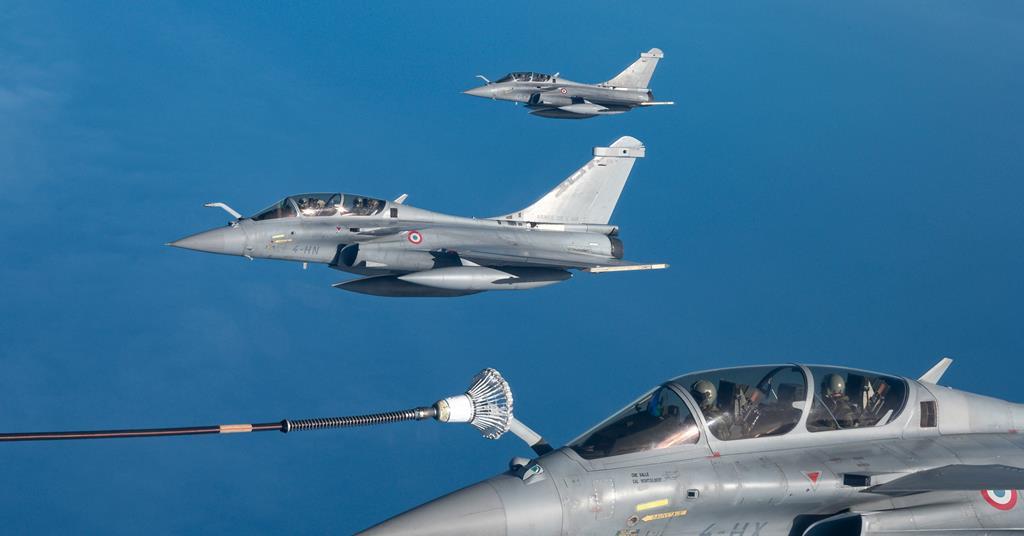
Rafale breezes into Asia-Pacific to burnish interoperability credentials
Deployment to the Asia-Pacific by the French air force has demonstrated Paris's expeditionary air power capability and allowed service to work more closely with allied air forces in the region.
Deltafan
ACCESS: Top Secret
- Joined
- 8 May 2006
- Messages
- 1,703
- Reaction score
- 2,341

Rafale : une partie de la commande signée en Indonésie est entrée en vigueur
Six Rafale sur les 42 commandés ont été mis en vigueur. L'Indonésie est officiellement devenue le 7e client du Rafale de Dassault Aviation.
As usual, to be confirmed (especially on the duration...)Part of the order for 42 Rafale, signed last February by Indonesia, has been put into effect, according to concordant sources. That's to say six Rafale out of the 42. Which means that the first installment was paid by Indonesia to Dassault Aviation. It was recently, as specified at La Tribune. Why only 6 out of 42? The Rafale contract in Indonesia is divided into two tranches, a first of six aircraft more or less financed (about 1.3 billion dollars), followed by another of 36 aircraft without any real budget. However, Rafale prices are indexed to an overall order of 42 aircraft.
@stealthflanker : any additional elements ?
- Joined
- 11 February 2010
- Messages
- 1,651
- Reaction score
- 2,716
@stealthflanker : any additional elements ?
Yeah. The contract was effective at Sept 9 this year. Initial payment was done. With expected arrival in 2026. Let' see if we will actually go ahead with rest of 42.
This is according to local news.
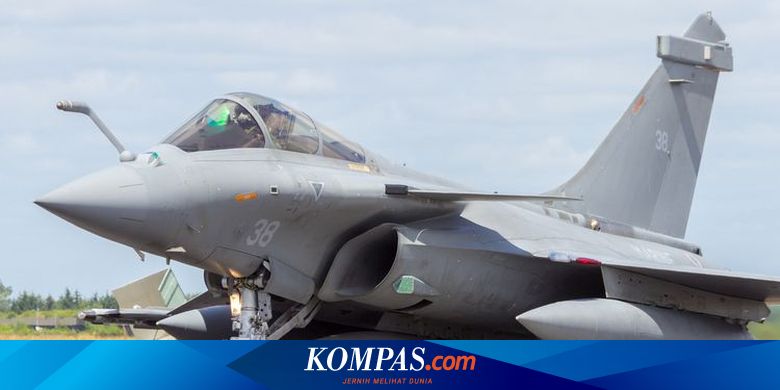
TNI AU: Jet Rafale Pesanan Pertama Akan Tiba di Indonesia Akhir 2026
“Unit pesawat Rafale akan datang 39 bulan setelah kontrak efektif, jadi kurang lebih akhir 2026 pesawat pertama Rafale akan tiba di Indonesia'.
---
Feels like a good news. Tho this initial 6 will come without weapons, it's kinda strange maybe but that's just how things work here as we put weapons/equipment in separate tender. Same thing for our Su-27/30's.
Rafale will give some much needed boost and will be the 2nd aircraft with phased array in our airforce (beside KF-21 if we decided to actually buy the production version)
Deltafan
ACCESS: Top Secret
- Joined
- 8 May 2006
- Messages
- 1,703
- Reaction score
- 2,341
Theoretically, 42 Rafale ordered by France in 2023: 12 new, to replace the 12 used sold to Croatia, and 30 new already planned. Otherwise, 13 of the previous order of 27 ("4T2"), are to be delivered to the French Air Force in 2023.

 ukdaily.news
ukdaily.news

France's military orders in 2023 - UK Daily News
The budget of the Armies will reach 42.9 billion euros in 2023 then will increase by 3 billion each year until 2025 to reach 50 billion. Large orders will be
(...)
the year 2023 will see significant arms orders for the Land, Air and Space Armies and the Navy, including equipment and a batch of Aster missiles. But the largest order will be for 42 Rafale.
The objective of providing the Air Force with 185 Rafale combat aircraft by 2030 is “a bare minimum” to accomplish its missions in an increasingly contested airspace, General Stéphane Mille declared last February. Chief of Staff of the Air and Space Force (CEMAAE).
(...)
13 Rafale delivered in 2023
(...)
- Joined
- 11 February 2010
- Messages
- 1,651
- Reaction score
- 2,716
Budget for additional Rafale seems to have been approved.
View: https://twitter.com/AHelvas/status/1580105997082918913
View: https://twitter.com/AHelvas/status/1580105997082918913
Well, we've got the official nbrs:@Deltafan is pretty spot on. “Dec 2020” means “Dec 31st 2020”. So we’re talking 18 months.
246 Rafales is the total delivered as of June 30th 2022. It’s not the average fleet over the time period, which was 227 Rafales… should be obvious why you can’t divide by 246.
146,000 hrs / 2 engines / 227 aircraft / 1.5 years = 215 hours per year
Quoi qu’il en soit, selon les normes édictées par l’Otan, un pilote de chasse doit effectuer un minimum de 180 heures de vol par an.
Or, un pilote de combat de l’AAE ne devrait voler que pendant 147 heures en 2023 [voire aussi en 2024], contre 162 heures en 2022. Les pilotes de transport ne sont pas mieux lotis, avec 189 heures prévues pour l’an prochain, alors que la norme Otan est de 320 heures.
***************////////******************
Be that as it may, according to the standards laid down by NATO, a fighter pilot must perform a minimum of 180 flight hours per year.
However, an AAE combat pilot is only expected to fly 147 hours in 2023 [or even in 2024], compared to 162 hours in 2022. Transport pilots are no better off, with 189 hours planned for the year next, while the NATO standard is 320 hours.
(notice also the drastic impact of offloading toward Dassault's foreign customers in-service airframe without much foreseen planning on AdlAE training).
So, who's got the facts true*?
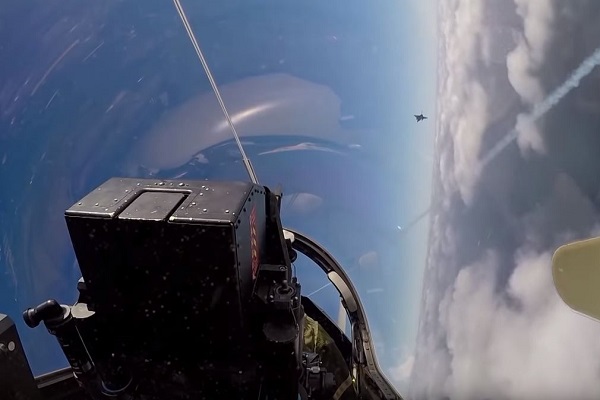
Selon un rapport, le déficit d'entraînement des pilotes de l'armée de l'Air et de l'Espace est "préoccupant" - Zone Militaire
Lors d'un exercice récent, des Eurofighter Typhoon et des F-35B de la Royal Air Force ont vidé les stocks de missiles air-air AIM-132 ASRAAM devant être
 www.opex360.com
www.opex360.com
*Call me Robin Maths!
Last edited:
@TomcatViP As you know, there is always more than 1 pilot per aircraft… so the aircraft fly more hours than the pilots. There is nothing incompatible with pilots flying 150 hours and aircraft flying 220-250 hours or more.
I’ll pull up the historical numbers on pilot flight hours in the French Air Force. This includes the Mirage fleet in the mix which is as large as the Rafale fleet and has its own operational challenges, so sometimes hard to draw conclusions about exactly what is driving down pilot hours.
I’ll pull up the historical numbers on pilot flight hours in the French Air Force. This includes the Mirage fleet in the mix which is as large as the Rafale fleet and has its own operational challenges, so sometimes hard to draw conclusions about exactly what is driving down pilot hours.
Last edited:
Annual flight hours per fighter pilot (goal : 180 hours)
2013: 153 hours/pilot
2014: 157
2015: 154
2016: 163
2017: 164
2018: 161
2019: 159
2020: 152
2021: 161
2022: 162
2023 plan: 147
2024 plan: 161
2025 plan: 166
The blip in 2023 is linked to both Rafale and Mirage 2000 fleets (exports of used Rafales and retirement of Mirage 2000C RDIs).
Source: https://www.budget.gouv.fr/files/up...F/BG/PGM/178/FR_2023_PLF_BG_PGM_178_PERF.html
2013: 153 hours/pilot
2014: 157
2015: 154
2016: 163
2017: 164
2018: 161
2019: 159
2020: 152
2021: 161
2022: 162
2023 plan: 147
2024 plan: 161
2025 plan: 166
The blip in 2023 is linked to both Rafale and Mirage 2000 fleets (exports of used Rafales and retirement of Mirage 2000C RDIs).
Source: https://www.budget.gouv.fr/files/up...F/BG/PGM/178/FR_2023_PLF_BG_PGM_178_PERF.html
Last edited:
siegecrossbow
I really should change my personal text
- Joined
- 12 March 2012
- Messages
- 729
- Reaction score
- 2,210
Annual flight hours per fighter pilot (goal : 180 hours)
2013: 153 hours/pilot
2014: 157
2015: 154
2016: 163
2017: 164
2018: 161
2019: 159
2020: 152
2021: 161
2022: 162
2023 plan: 147
2024 plan: 161
2025 plan: 166
The blip in 2023 is linked to both Rafale and Mirage 2000 fleets (exports of used Rafales and retirement of Mirage 2000C RDIs).
Source: https://www.budget.gouv.fr/files/up...F/BG/PGM/178/FR_2023_PLF_BG_PGM_178_PERF.html
Interesting how COVID didn’t have too big of an impact on flight hours.
isayyo2
Lurker alert
- Joined
- 24 November 2011
- Messages
- 1,132
- Reaction score
- 2,334
It’s easier to socially distance at 40,000 feetInteresting how COVID didn’t have too big of an impact on flight hours.
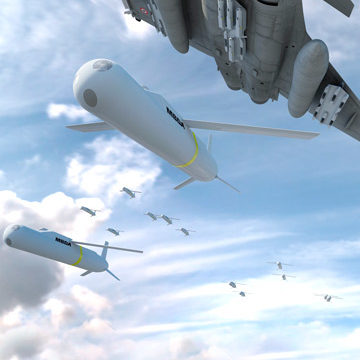
MBDA Smart gliders (light) launched from a Rafale. An image sourced from a link posted by @Forest Green here
(notice the three sextuple launchers)
Last edited:
Deltafan
ACCESS: Top Secret
- Joined
- 8 May 2006
- Messages
- 1,703
- Reaction score
- 2,341
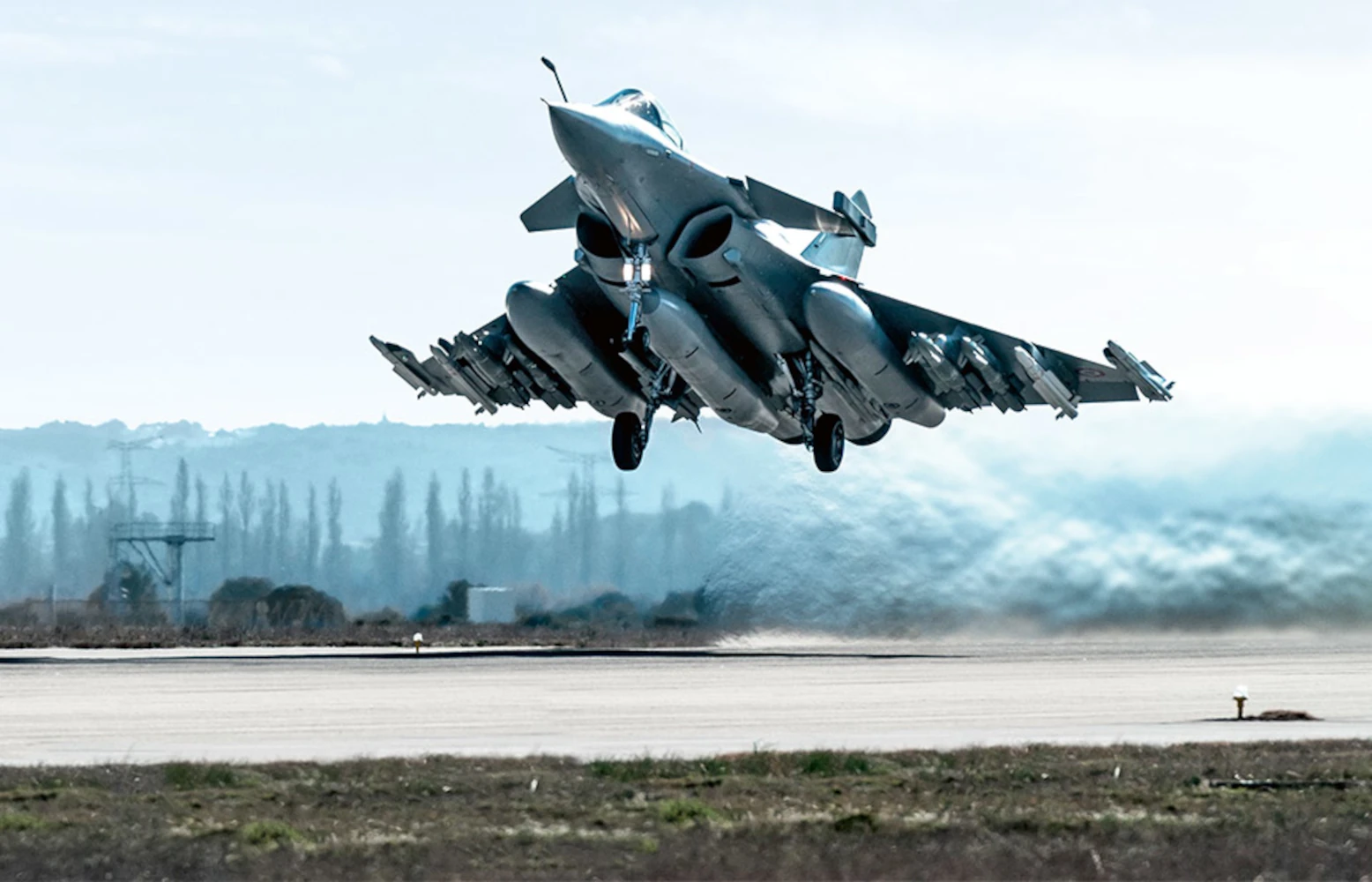
Indonesia seeks foreign funding to acquire French Rafale and Qatari Mirage 2000-5 fighter jets
The Indonesian Ministry of Finance has permitted the Indonesian Ministry of Defense to seek foreign loans of up to $3.9
The Indonesian Ministry of Finance has permitted the Indonesian Ministry of Defense to seek foreign loans of up to $3.9 billion to maintain the combat capabilities of the Indonesian Air Force. This authorisation applies to three proposals presented by the Ministry of Defense. According to a report that Jane’s Information Group published on November 15, 2022, two of these plans include the purchase of the second batch of 12 multirole Dassault Rafale fighters from France as well as a batch of 12 to 18 multirole Dassault Mirage 2000-5 fighters from the Qatari Air Force.
The programme’s major objective is to increase the number of Rafale combat aircraft in its inventory. After reaching a consensus with the Ministry of National Development Planning in September 2022, the Indonesian Ministry of Finance authorised a fresh credit line with a foreign lender of $2.9 billion to purchase a second batch of 12-18 Rafales.
Recall that on February 10, 2022, the Indonesian Ministry of Defense signed a contract with the French company Dassault Aviation to purchase 42 Rafale jets. This contract was made with Dassault Aviation. It is anticipated that this agreement will result in a total cost of $7 billion for the supplies, excluding the cost of any weaponry. Due to Indonesia’s limited access to liquid funds, this Rafale purchase agreement was split into three parts. The first part of the agreement included the purchase of six aircraft (for which a formal contract was also signed in February), the second part included the purchase of 12-18 units, and the third part included the purchase of 18-24 units.
(...)
At last, we get to know why French AdlAE has repeatedly flown their Rafale from their own territory, when asked to reinforce eastern NATO flanks with routine patrols.
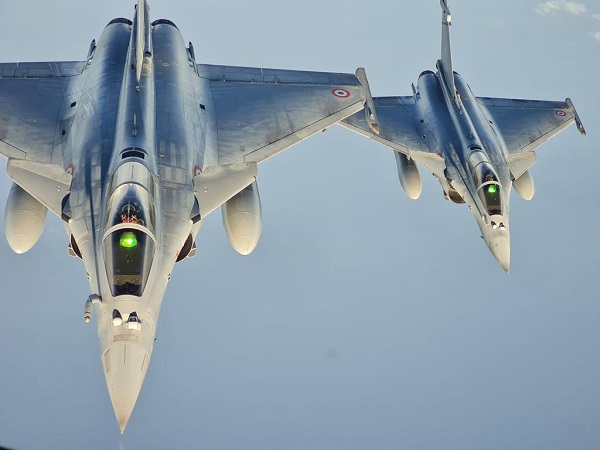
 www.opex360.com
www.opex360.com
A reality check for some
Lors d’un audition à l’Assemblée nationale, le chef d’état-major de l’armée de l’Air [CEMAAE], le général Stéphane Mille, a donné les raisons pour lesquelles les Mirage 2000-5 étaient jusqu’alors désignés pour être déployés dans les pays baltes.
« Nous veillons à ne pas user prématurément nos appareils, tout en prenant en compte les besoins exprimés par l’Otan. Concrètement, nous avons fait le choix, dans un premier temps, de maintenir les Rafale en métropole et de ne projeter que des Mirage 2000-5 à l’est de l’Europe. Pourquoi? Parce qu’un avion envoyé à l’extérieur est utilisé à 100 % pour cette mission. C’est par conséquent un avion qui nous manque pour la formation de nos pilotes alors que […] vingt-quatre de nos Rafale ont été cédés », a expliqué le CEMAAE.
Aussi, a-t-il continué, « dès lors qu’on nous demande moins de douze sorties par semaine, je préfère faire décoller les avions depuis la métropole, plutôt que de les déployer à l’Est ». Mais comme il s’agit de renforcer le dispositif de l’Otan sur son flanc oriental, le choix du Rafale s’est finalement imposé.
-----------------------//------------------------------------
During a hearing at the parliament, the Chief of Staff of the Air Force [CEMAAE], General Stéphane Mille, gave the reasons why the Mirage 2000-5s were until then designated for deployment in the Baltic countries.
“We are careful not to wear out our aircrafts prematurely, while taking into account the needs expressed by NATO. Concretely, we made the choice, initially, to maintain the Rafale in mainland France and to project only Mirage 2000-5 in Eastern Europe. Why? Because a plane sent out is used 100% for this mission. It is therefore an aircraft that we miss for the training of our pilots while […] twenty-four of our Rafales have been sold, ”explained the CEMAAE.
Also, he continued, "as soon as we are asked for less than twelve sorties per week, I prefer to launch those missions from the mainland, rather than deploying them in the East". But as it is a question of reinforcing the NATO device on its eastern flank, the choice of the Rafale was finally imposed.

Otan : Quatre Rafale de la 30e Escadre de chasse s'apprêtent à s'envoler vers la Lituanie - Zone Militaire
La seule et unique fois que des Rafale ont été engagés dans la mission Baltic Air Policing remonte à mai 2014. À l'époque, quatre avions de ce type,
 www.opex360.com
www.opex360.com
Last edited:
French Navy Rafale train with IDF f-16I:
 https://www.timesofisrael.com/iaf-french-air-force-hold-joint-strike-drills-over-israels-skies/amp/
https://www.timesofisrael.com/iaf-french-air-force-hold-joint-strike-drills-over-israels-skies/amp/
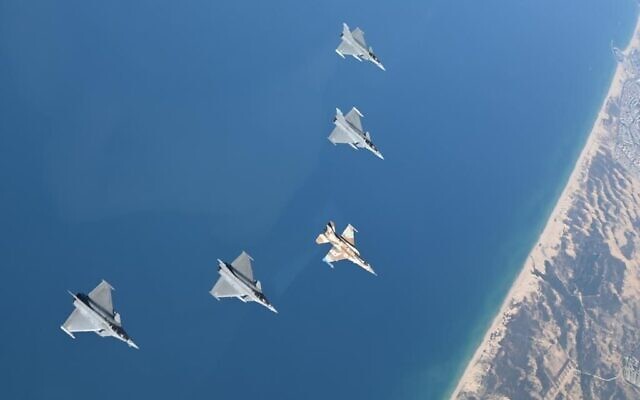 https://www.timesofisrael.com/iaf-french-air-force-hold-joint-strike-drills-over-israels-skies/amp/
https://www.timesofisrael.com/iaf-french-air-force-hold-joint-strike-drills-over-israels-skies/amp/First live Zulu alert for the Rafale in Lithuania: 2 unidentified bogeys intercepted
Deltafan
ACCESS: Top Secret
- Joined
- 8 May 2006
- Messages
- 1,703
- Reaction score
- 2,341
Indian Navy opts for Rafale M
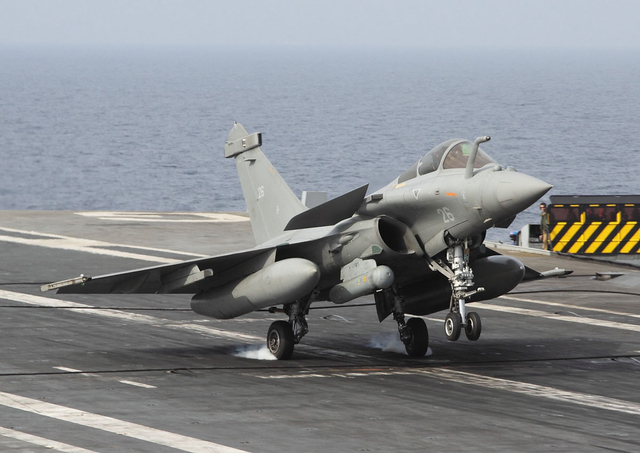
 www.scramble.nl
www.scramble.nl
It's not over, Indian government is not Indian Navy.

Indian Navy opts for Rafale M
Indian Navy opts for Rafale M The Dassault Rafale M emerged as the frontrunner for the Multi-Role Carrier-Borne Fighter (MRCBF) programme to supply 26 fighter aircraft for the Indi...
It's not over, Indian government is not Indian Navy.
It has not been reported when the Indian MoD will take the decision ad when the Cabinet Committee on Security (CCS) will clear the defence deal.
- Joined
- 29 November 2010
- Messages
- 1,783
- Reaction score
- 3,497
not surprised.Indian Navy opts for Rafale M

Indian Navy opts for Rafale M
Indian Navy opts for Rafale M The Dassault Rafale M emerged as the frontrunner for the Multi-Role Carrier-Borne Fighter (MRCBF) programme to supply 26 fighter aircraft for the Indi...www.scramble.nl
It's not over, Indian government is not Indian Navy.
It has not been reported when the Indian MoD will take the decision ad when the Cabinet Committee on Security (CCS) will clear the defence deal.
makes the most logical sense as the AF already operates the Rafale as well
Also, some time ago I made an infographic of how the aircraft could fit on the elevators
and the Rafale could fit perfectly, although not much leeway, on those tiny vikrant elevators
F-18 was okay width wise, but length wise was a bit over, and may require being parked a bit diagonal on the lift or having the nose/rear stick out
still hoping to see a video of the Rafale doing a ski jump take off
Deltafan
ACCESS: Top Secret
- Joined
- 8 May 2006
- Messages
- 1,703
- Reaction score
- 2,341
36th of 36 Rafale ordered for IAF delivered in India
View: https://twitter.com/IAF_MCC/status/1603276297626882048?s=20&t=oO2JzLuSamUfCtHEIUAECg
View: https://twitter.com/IAF_MCC/status/1603276297626882048?s=20&t=oO2JzLuSamUfCtHEIUAECg
France delivered the 36th Rafale to India. And there was much rejoicing.
View: https://www.youtube.com/watch?v=yciX2meIkXI
Yeaaaaaaah !!!
Yeaaaaaaah !!!
Deltafan
ACCESS: Top Secret
- Joined
- 8 May 2006
- Messages
- 1,703
- Reaction score
- 2,341
Dassault Rafale "preselected" in Colombia
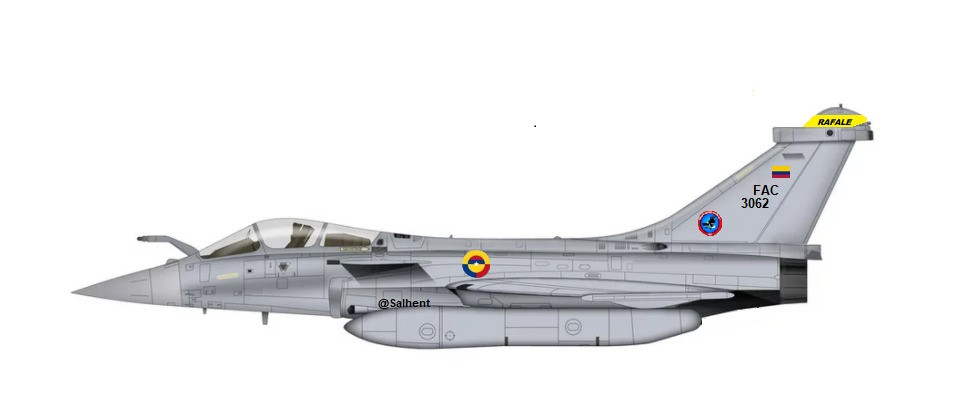
 www.infodefensa.com
www.infodefensa.com
Colombia preselecciona al Rafale como su futuro avión de combate
Asimismo, explicó que también se han evaluado las prpuestas de Suecia, con los Gripen de Saab, y de Estados Unidos, con los F-16 de Lockheed Martin. Sin embargo, desde el Gobierno afirm ...
The Government of Colombia has pre-selected the French Dassault Rafale aircraft as its new supersonic fighter to replace the already obsolete Kfir aircraft currently used by the Colombian Air Force, as has been announced by the Presidency of the Republic and confirmed by the Minister of Defense, Iván Velásquez, in dialogue with a local radio station. Through a press release, the Government has explained that it is currently negotiating to acquire 16 new aircraft for an amount of 15 billion pesos (approximately 3,150 million dollars).
The administration headed by Gustavo Petro has wanted to make it clear that nothing has yet been signed and that it is a pre-selection in which the final details are still being negotiated. He also explained that proposals from Sweden, with the Saab Gripen, and from the United States, with the Lockheed Martin F-16, have also been evaluated.
However, from the Government they affirm that "so far, the Rafale aircraft proposal is the best option for the country in relation to price, efficiency and operability". In this sense, it was detailed that "one hour of flight of a Rafale plane is approximately 30% cheaper than the hour of flight of a Kfir, estimated at 89 million pesos" (18,700 dollars).
According to Velásquez, the first batch, if an agreement is finally reached, will be between three to five planes, for an amount of 678 million dollars, which will arrive in the country in 2023.
From the Presidency they affirmed that all the proposals studied include industrial compensation and technology and knowledge transfer
(...)
In addition, the Colombian government stressed that, if the purchase is completed, resources from (...) the acquired debt "will begin to be paid within five years."
(...)
Very much a surprise winner of the Colombian contest. Some of the reasons why the Rafale beat the F-16V, Gripen and Typhoon below…

 www.pucara.org
www.pucara.org

Las razones de la selección del Rafale por parte de Colombia
Ante el anuncio de la preselección del Dassault Rafale por parte del gobierno colombiano para reemplazar sus IAI Kfir, indagamos un poco más sobre las razones por las cuales se decidió cambiar en los últimos días la preferencia del F-16V Block 70 por el modelo francés.Las negociaciones por el...
 www.pucara.org
www.pucara.org
The reasons for the selection of the Rafale by Colombia
Given the announcement of the pre-selection of the Dassault Rafale by the Colombian government to replace its IAI Kfir, we investigated a little more the reasons why Colombia’s preference changed in recent days from the F-16V Block 70 to the French fighter.
Negotiations for the replacement of the Kfir have been going on for ten years, having started in 2012, when requests for information were sent to the main companies, but Boeing and Dassault did not pay much attention because they believed that the Colombian Air Force (FAC) was not serious.
In 2013 manufacturers were visited, such as Boeing and Lockheed Martin in the US, Eurofighter, Dassault, the Russians that offered the MiG-35, and SAAB’s Gripen, while meetings were also held with various air forces, including Brazil.
In 2020, although there was no progress from a political point of view, the selection committee made different matrices, where the Typhoon won in all cases, and, at that time, Dassault began to pay attention to Colombia. The Typhoon's problem was high operating costs, so the F-16, then second, came to lead the selection. The F-16V was, for the FAC, “ the poor man’s F-35 ”.
However, the FAC argued that the electronic warfare systems that the air force's Kfirs have today are better than the ones offered by the factory F-16 Block 70 and Lockheed was not willing to change it, while the Python 5 missiles are better than the versions of Sidewinder offered and would not be allowed to integrate said missiles, nor the Derby nor the Spice bombs that the FAC possesses. The United States offered the F-16 only with Sidewinder and AMRAAM.
Although it was negotiated to generate a variant that integrates these systems and weapons, the FAC saw that a version that would be too specific would remain and the United States was very reluctant to go down that path. In addition, the financing was not in the best conditions and the United States also showed little openness to modifying it.
On the other hand, the FAC considered that the Gripen was not leading in any aspect, but rather, as an official who was part of the selection process explained, “was second in everything. The plane is having major integration problems in Brazil with its air-to-air and air-to-surface systems, which are not fully operational, they are in a kind of Beta version. These are problems that they do not say in public » he claimed, adding « the precision of the air-to-surface systems is not even similar to those used by the Kfir (Elbit), the F-16 and the F-35 ”.
Another problem with said plane, as reported by the FAC, is that the delivery time was very long, since Brazil and Sweden would go first and then Colombia, and the program already has significant delays.
The Eurofighter, for its part, had the problem of costs and that it is complex to maintain. It's the real winner but a very expensive one, although, at the time, they argued that some of the Rafale's operating costs are higher.
The Colombian Air Force was targeting Tranche 3 of the Typhoon, but offers had only been made for used Tranche 1 and 2 Typhoons for immediate delivery, or else new aircraft, but with very long delivery periods. Financing costs were also higher than the rest.
Faced with this panorama of intransigence from the Americans and the high costs of the Eurofighter, in addition to the limitations of the Gripen, the French decided to bet big in the middle of 2022 and start by removing the end-user restrictions, which also existed on the Gripen and the Eurofighter. In addition, they agreed to offer the integration of the Meteor missile, but also to integrate the Derby, Phyton 5 and Spice bombs, making it the most capable of all. Only the restriction on the use of nuclear weapons remains.
In addition, having a naval version, the Rafale was born with anti-ship capacity, which makes it the most multirole of all. This aspect interests Colombia because of the crises it has had with Nicaragua and Venezuela.
France also stated that it can start delivering them in one year, the shortest term of all those offered. This is essential because Kfir will be decommissioned at the end of 2023, because the support contract with IAI has already ended this year, which withdrew its people from Colombia, so sustaining the planes becomes too complicated and expensive.
The French presented their new offer to the FAC, convincing the Selection Committee, despite the fact that it had been leaning towards the F-16. The committee then agreed with Dassault, who raised the issue with French Prime Minister Emanuel Macron, who has a good relationship with Colombian President Gustavo Petro, and they achieved the first step towards an agreement between the governments.
As indicated by the Selection Committee, they were convinced because they were able to solve multiple issues. On the one hand, the Rafale’s electronic warfare capacity is customizable and Colombia was given access to the database to be able to modify it. The Rafale can integrate Israeli weaponry, employment restrictions have been lifted, it has built-in anti-ship capability and has specific weapons for the Rafale and is combat proven. Another advantage is that, since it was designed to operate on aircraft carriers, it can operate on short runways, which the Typhoon and the F-16 cannot. This allows them to operate in places like Tres Esquinas, Grupo Aéreo del Oriente and San Andrés. Furthermore, it requires less logistical support and is more versatile to operate. They also highlighted that it is a more maneuverable aircraft with a better power-to-weight ratio, in addition to the fact that, among other factors, the Rafale has an AESA radar with better coverage than the F-16’s, as the F-16’s radar has a fixed antenna with only electronic scan while the Rafale’s radar antenna can move side to side. [NOTE: THIS IS CLEARLY INCORRECT]
The Kfir costs almost 18,000 dollars per flight hour, almost as much as the Eurofighter (it is expensive because there are almost no operators or spare parts or support). The Rafale ranges between 15,000 to 17,000, the Eurofighter from 19,000 to 21,000, the F-16 from 9,500 to 11,000, and the Gripen from 7,500 to 8,000.
Thus, the Rafale has operating costs equal to the Kfir, but with many more capabilities. As they explained, the Rafale consumes 35% less fuel per engine, which makes it more cost-efficient, especially in short missions and without using afterburner.
Regarding the funds, since 2017 the National Council for Economic and Social Policy (CONPES) issued the document that reserves the funds for the purchase, so it would not affect other resources, such as those generated by the tax reform.
Although the government highlights the offset conditions, the reality is that they all offered it and, according to the FAC, the scheme proposed by the Swedes was the best.
Thus, now it remains for the detailed negotiation of the terms of the agreement to be carried out and then the signing of a contract, which could take place in the first months of 2023.
- Joined
- 29 November 2010
- Messages
- 1,783
- Reaction score
- 3,497
Congrats to the Rafale. I remembered in the early 2000s up to the mid 2010s, so many people and media outlets were lamenting the lack of Rafale exports, and here we are today. the Rafale is a late bloomer and I think already surpassing Mirage 2000 total exports.
the Rafale is a late bloomer and I think already surpassing Mirage 2000 total exports
Yes indeed! This order will be the one that puts Rafale ahead of Mirage 2000 in total exports.
286 Mirage 2000s exported from 1984 thru 2007. (Not counting the 12 old Mirages flogged off on loan to Brazil)
vs.
248 Rafales exported from 2015 thru 2031, based on confirmed orders only. But this number should grow to 300 exports with the Indonesian follow-on orders (36 aircraft beyond the initial 6) and now this Colombian order (16 aircraft).
- Joined
- 29 November 2010
- Messages
- 1,783
- Reaction score
- 3,497
im a bit surprised that Dassault is willing to integrate the Derby and other Israeli munitions on the plane and that LockMart wasnt.
I am interested in how long it would take and how easy/difficult it would be
the article mentioned some integration issues on the Gripen E, I think this will be overcome
but the main issue probably is the long wait time due to what I assume is slower production and the need to fulfill the Brazilian and Swedish order first.
I am interested in how long it would take and how easy/difficult it would be
the article mentioned some integration issues on the Gripen E, I think this will be overcome
but the main issue probably is the long wait time due to what I assume is slower production and the need to fulfill the Brazilian and Swedish order first.
Similar threads
-
-
France-Germany-Spain Future Combat Air System (FCAS / SCAF / FSAC)
- Started by Deltafan
- Replies: 1K
-
-
-

